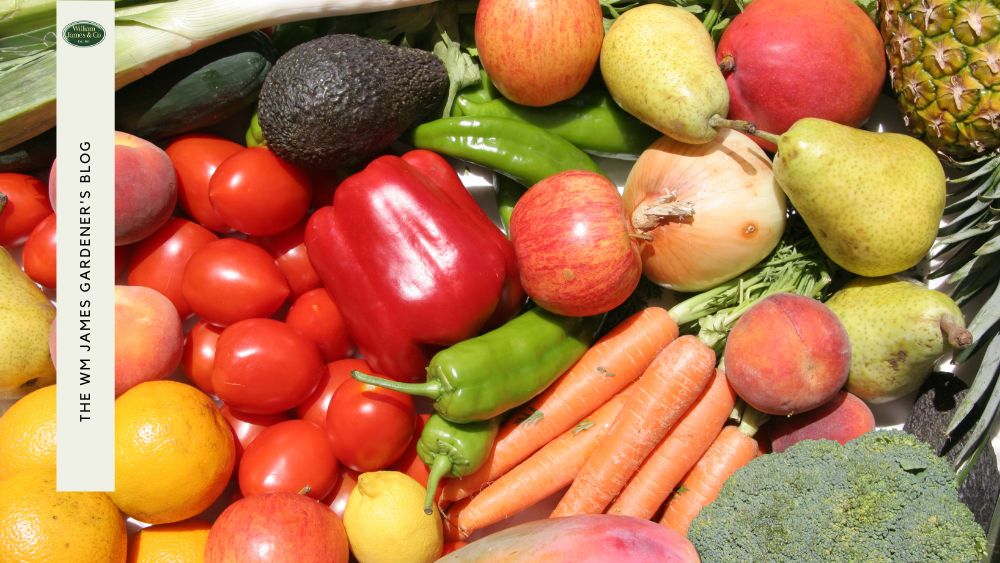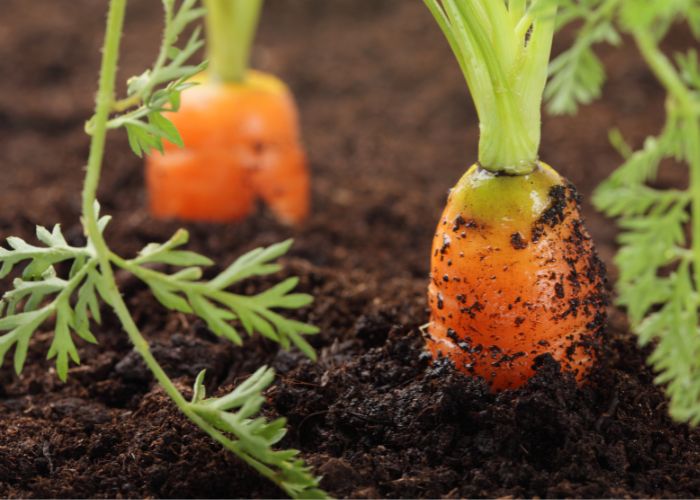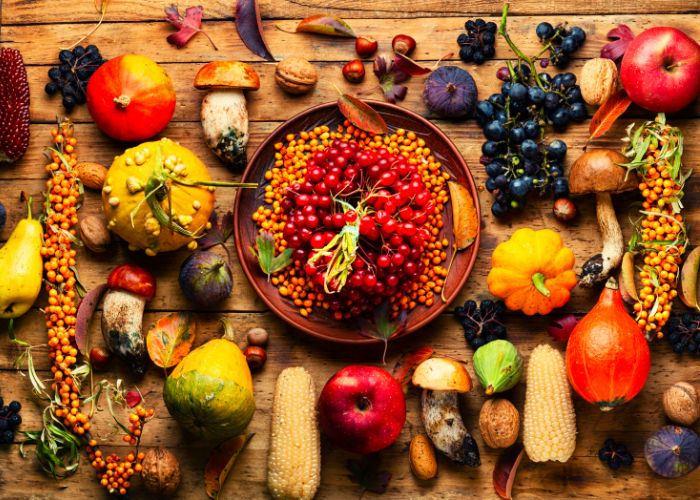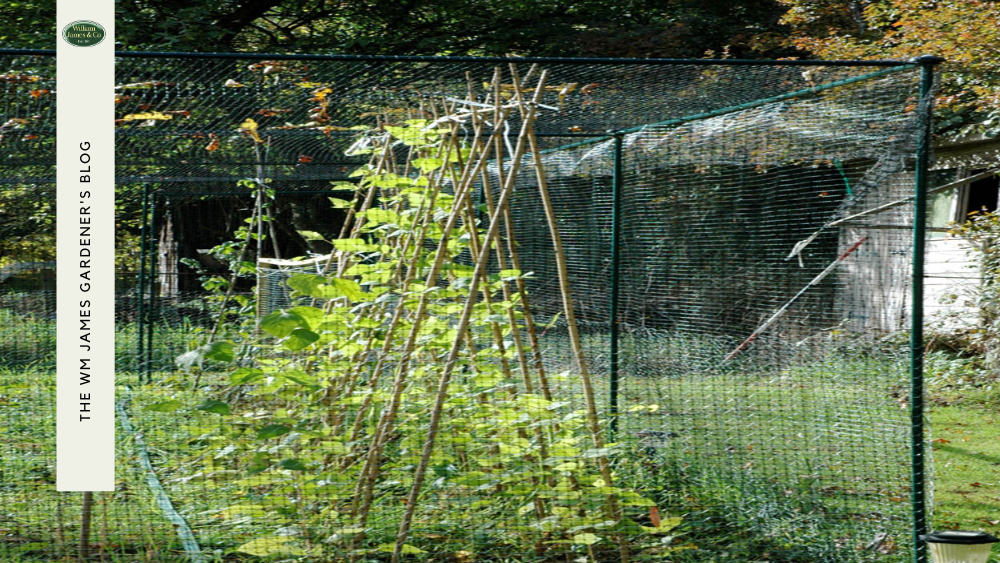We use cookies to make your experience better. To comply with the new e-Privacy directive, we need to ask for your consent to set the cookies. Learn more.
Eating With The Seasons: A Guide To UK Seasonal Fruit And Veg
- Admin
- WM James Gardening Blog
- 28 Apr 2023
-
23views

Gardening expert tips & advice on what UK seasonal fruit & veg you should be growing, & how to ensure a successful harvest! Read here for everything you need to know.
Eating with the seasons is the new trend! Growing these veggies is a great way to get with the times, make your meal times healthier and begin a fulfilling hobby!
Knowing where to start when growing your own food can be tricky, and getting it right is really important to ensure that you get the most out of your produce.
That's why we've put together this guide to help you understand which fruits and vegetables are in season in the UK and when you should plant them to help you get on your way to becoming a green-fingered pro!
Read on to find out what you should be growing, why and when for a colourful garden and kitchen!
What is Seasonal Eating, and Why is it Important?
Seasonal eating is a way of eating foods that are in season and available locally – in this case, straight from your garden! This means the food is fresher, tastier and more nutrient dense than imported or out-of-season produce.
Most vegetables are available year-round in the shops, but a lot of these veggies come with the added air miles and carbon footprint to get them to the supermarket.
Planting your own vegetables and eating in a more informed way is the way to go if you’re looking to become healthier and watch your personal effects on the environment.
Knowing exactly when to sow your seeds and harvest these plants is crucial for optimising your garden and kitchen, so what should you do, and when?

Winter Warmers: The Best Veg to Get You Through Colder Months
Your typical winter vegetables are expected:
- winter squash
- celery,
- and onions
These fruits and veggies are great for long, slow cooks. A great winter warming stew uses up your tougher winter crops and provides you with a delicious and hearty meal – perfect for after a cold day.
To get the most from your winter harvest, you should aim to sow your seeds late spring to mid-summer to offer the best chance of proper growth and nutrient development.
Spring Delights: The Start of the Growing Season
Spring is full of great vegetables to create new and exciting recipes with.
The beginning of spring brings more colour and flavour. Smarten up your plate with:
- purple sprouting broccoli
- brussels sprouts
- Jerusalem artichokes
- runner beans
- asparagus
This is also the time to enjoy spring greens and create new sides with cauliflower and new potatoes. Broad beans are a great addition to spring salads you may be starting to cook up, whilst spinach and kale offer that healthy green you crave.

Summer Bounty: Spruce Up Your BBQ Sides & Salads
Summer marks BBQ time! With the right ingredients and recipes, summer sides can become the star of the show at your next outdoor get-together.
Spring onions, swiss chard, french beans and tomatoes can all be prepared and dressed in delicious flavours for a zingy and exciting salad.
Summer squash can be roasted off and tossed with feta and herbs for a fresh and nutritious twist that accompanies the burgers and sausages.
To really get the most out of your summer crops, ready for the sunny season, you want to aim to sow your seeds in late spring. This method works best for your spring onions and lettuces, which are faster growers.
More hardy, root vegetables, such as potatoes and summer squash, that you wish to eat throughout the summer months can be planted as early as winter/early spring. These veggies actually benefit from the frost of cooler weather before the changing seasons to enhance the nutrients in the soil that transfer into your delicious and healthy yield.
Summer is also a time to enjoy all your delicious berries and seasonal fruits that have been growing safely in your fruit cages!
Autumn Harvest: Fall Recipes For Happy Eating
Eating seasonally can really freshen up your dinner table and give you a lift, even when the weather starts to get colder and darker.
Making the most of your seasonal UK produce, such as butternut squash, sweetheart cabbage, red cabbage and root vegetables like onions and carrots, can offer you hearty meals with all the vitamins and minerals you need to stay healthy in the winter months.

Shop at WM James for All Your Gardening Needs!
Using our range of low and walk-in fruit cages, you can offer your vegetables the perfect protection year-round.
Our fruit cages are structurally long-lasting and perfect for preventing birds, butterflies, foxes and other predators that may take a bite out of your crops. You can have a thriving garden that adds to your kitchen, no matter the season.
Follow our advice for what veggies should be planted and eaten and when, and you'll soon be a veg patch expert!
FAQs
What Are The Easiest Vegetables To Grow?
Green essentials such as green beans, peas and lettuce are the best for veg patch beginners. They're hardy and grow without much effort and attention. These veggies are best to sow throughout the early spring for late spring and summer harvest.
When Should I Plant My Vegetables To Harvest At The Right Time?
You should typically aim to plant your vegetables throughout the season prior to the one you are hoping to be harvesting in. Longer-growth vegetables such as tougher root vegetables, should be allowed longer and benefit from being sometimes planted up to two seasons prior to harvesting.
If you're planting anything that grows above the ground, pick the right season and give it a few months to come into its own!
What Is The Best Month To Plant Vegetables?
The majority of seasonal veg is best eaten in the spring and summer months. For this reason, planting between the months of March-May is ideal for allowing your summer crop to excel and become the delicious sides to accompany your light, fresh summer dishes!
What Vegetables Should I Plant In October?
Planting in early October will offer you your favourite veggies for late winter and early spring. Overwintering vegetables benefit from the hard frosts that come with the winter months and are perfect for October sowing.













